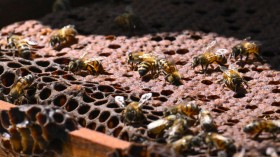NASA is studying a peculiar star that exhibits the characteristics of both a very young star and a very old star.
The star known as IRAS 19312+1950 possess the feature of a very young and very old star. It appears very bright engulfed in a chemically rich cloud of material as observed by NASA's Spitzer Space Telescope.
Experts suspect that the peculiar star is a forming protostar. It is 10 times more massive than the Sun and is capable of emitting 20,000 times more energy. But the surprising thing is that the region where it is located is not a known stellar nursery or a place where new stars are formed. However, the presence of an interstellar bubble near the region supports that theory that it could indeed be a protostar.
It's Spitzer's 13th launch anniversary! Limits of #science & #tech pushed in "Beyond" phase https://t.co/I2mG3IFmZA pic.twitter.com/54h30pg8mt
— NASA Spitzer (@NASAspitzer) August 25, 2016
This massive star has intrigued astronomers for many years. It is located very deep in the Milky Way galaxy. It is not every day that astronomers can see signs of extremely young and extremely old star in just one body. Initially, it was believed to be a red supergiant. But a new NASA-led research proved that IRAS 19312+1950 might be a forming protostar.
"Astronomers recognized this object as noteworthy around the year 2000 and have been trying ever since to decide how far along its development is," Martin Cordiner, an astrochemist at NASA's Goddard Space Flight Center said in a press release.
The peculiar star is located 12,000 light-years away from Earth; its peculiarity is obvious in particular radio frequencies. Astronomers have been trying to identify what type of star it is for many years. The contradicting characteristics of the star made it more difficult to identify its specific type.
But by using NASA's Spitzer Space Telescope and ESA's Herschel Space Observatory, astronomers leading the research were able to come up with their findings that described the origin of the star. According to a report, some features led experts to believe that the star is in its late-stage, with evidence of hydroxyl maser found in elderly stars. But a chemical-rich cloud was also seen, and it isame with the clouds found where there are newborn stars.
Careful observations by astronomers led to the conclusion that says other factors block the glow of the star, making it appear less bright than what it actually is, while the cloud around it appears to collapse. The collapsing clouds occur when a growing star pulls in materials from its surroundings, supporting the fact that despite its peculiar features, the body is indeed a protostar in its embryonic stage.
© 2024 NatureWorldNews.com All rights reserved. Do not reproduce without permission.




